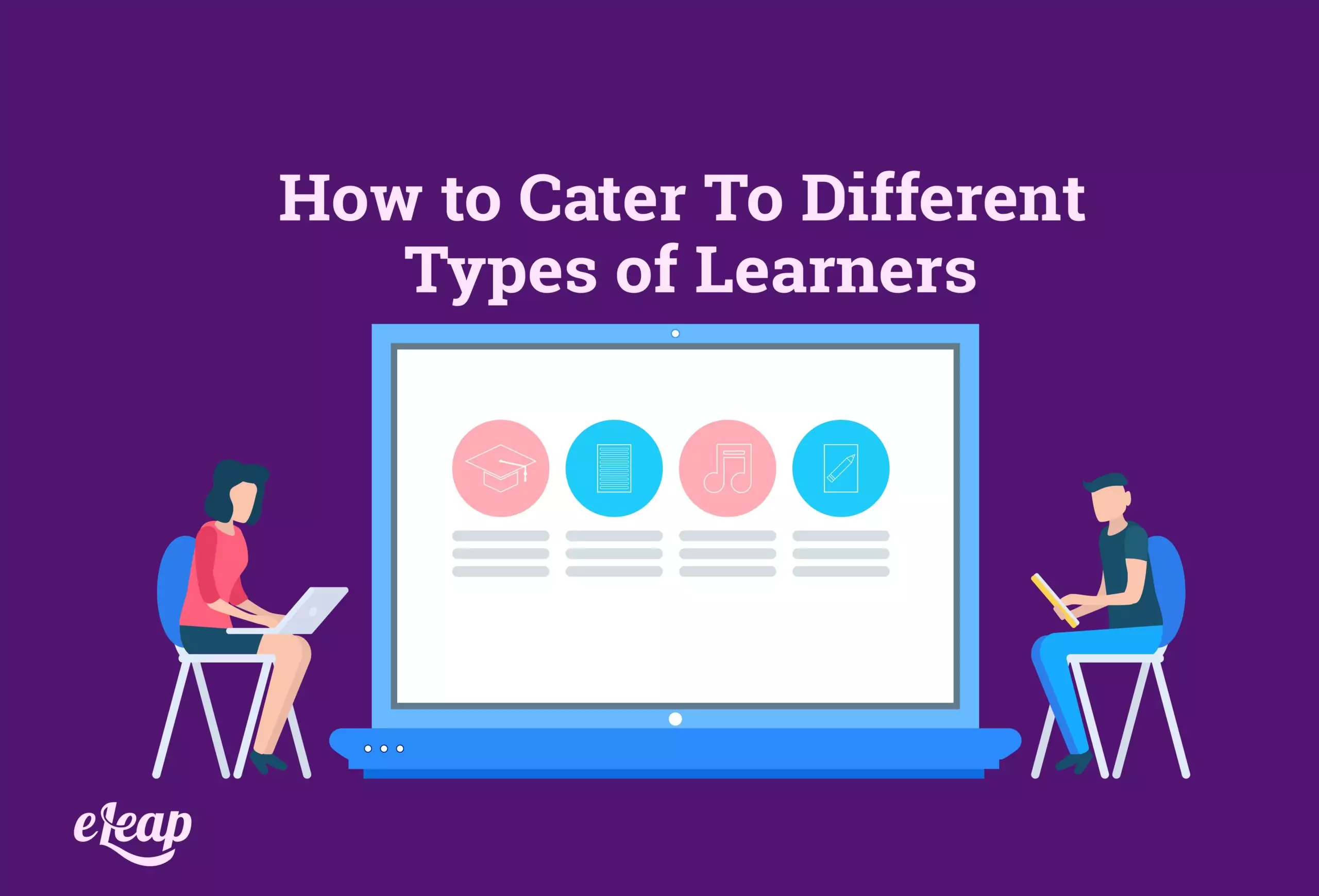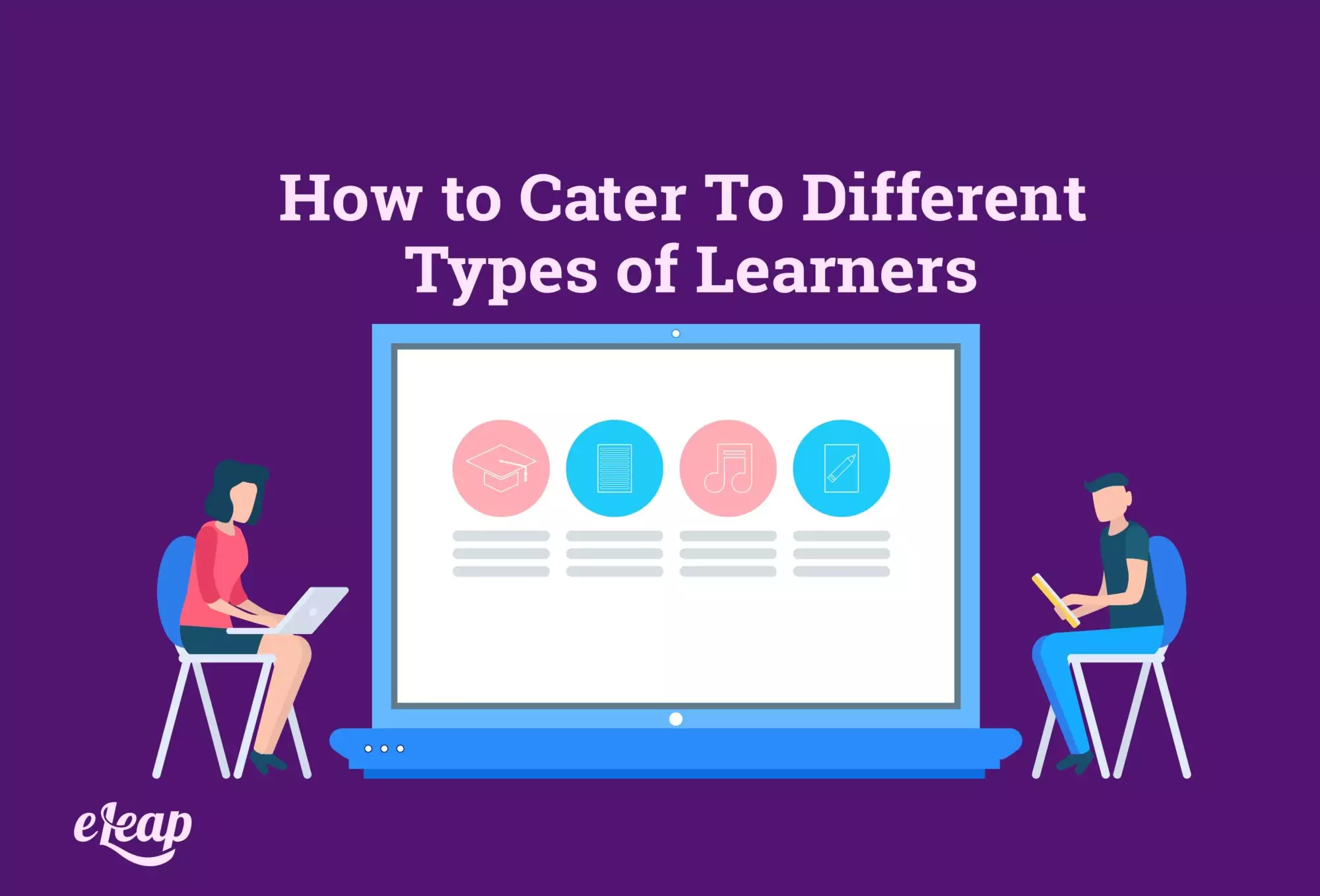How to Cater To Different Types of Learners

Ask any educator, and they’ll tell you that there is no one learning style that works for every student. We all learn differently. No two employees learn the same way, even if some prefer similar methods. This is why it’s so critical that your organization’s training strategy must take into account and cater to the varying learning strategies and styles of its employees.
If you want your learners all to have equal opportunities to absorb information and, ultimately, perform at the same high level, you need to be able to cater to different types of learners. Your learning management system should also provide options for employees to choose how they want to learn. You can’t perfectly adapt your LMS to fit every employee’s learning style, but you can take steps to make it more accessible to a wider range of people. Take a free trial of eLeaP to see how easy it is to cater to different learners.

Find the Middle Ground
Finding a middle ground is key when trying to tailor your LMS to different employee learning styles. You can determine which learning styles your employees prefer by analyzing data from your learning management system. You can use the information collected from your LMS to answer critical questions, such as what courses or modules employees respond to best and which ones seem to be more easily understood.
You can also try actively surveying your employees to find out what kind of training they like. Which is preferred: text, videos, quizzes, gamification, for instance? Learning should be centered around a middle ground that meets the learning needs of employees from as many different backgrounds as possible.
Resort to Video
Videos can be a great option if all else fails or you discover that learning styles differ significantly. Many people are visual learners; visual learning is easier and more engaging for most people than reading large chunks of text. Numerous studies have indicated that nearly 60% of people are more visually inclined when learning and that videos would likely be more attractive than other eLearning tools. If you’re unsure of how to cater to the largest possible number of learners with a single tool, videos are your best bet.
Implement Mentoring into Your Learning
Training used to be carried out mostly by employees, or by mentors, before learning management systems were so easily available. No matter whether your organization currently uses a learning management system, mentors still have tremendous value. Employees with low levels of engagement can benefit from mentors, specifically those with mentors. When learning, many people benefit from others’ help. Learning through the example of another employee may be much more useful than other methods of instruction. Social learning is a learned method of learning through other people and is very helpful.
Employee-to-employee mentoring is especially beneficial because employees understand one another struggles. When videos don’t work, implement a mentorship program and try social learning to increase trainee engagement and understanding. Further, mentors will also be able to strengthen their own knowledge through the process of instructing and training others. Regardless of whether your employees prefer to learn through direct interaction with others, a good mentor certainly won’t hurt.
Try Blended Learning
It may be beneficial for some employees to use blended learning if it is feasible, particularly for those who are struggling with eLearning more generally. The term ‘blended learning’ refers to a combination of eLearning and conventional learning methods. It is natural for you to want to encourage all your employees to use your eLearning program as widely as possible.
Establishing traditional training for employees only to disregard their LMS is a waste of time, money, and effort. Having said that, sometimes a conventional method, such as a seminar, may prove useful. From time to time, many employees will benefit from a more personal approach. Also, it helps learners whose experience with the eLearning process has been limited. Even though eLearning is taking over the modern learning world, there’s no harm in implementing more conventional aspects and putting a contemporary spin on them.
Alter Training Approaches Based on Job Roles
Each type of employee benefits from different learning techniques. Competitive gamification may be beneficial to some departments, such as sales. Audio learning might be more helpful for those who handle customer service calls. In some cases, one learning style cannot be generalized to a whole department, but you can customize training in some instances based on the type of job. There are certain reasons why people gravitate towards certain roles. Your employees’ job roles will provide you with information about the type of training they may need. It might be worth test-driving this and correlating any findings with data from your LMS.
Learning is unique to each individual. We all learn differently. Some learn by doing, others by watching, and some by listening. There is a wide range of learning styles, and people learn differently depending on what they are being taught. It’s critical that you’re able to get the most out of your LMS, and the only way to do that is to make sure it caters to every learner. If you don’t consider different learning styles, you won’t be able to make sure that all of your learners are benefitting from your LMS.
Training and eLearning should be tailored to different learning styles for optimal retention and engagement. Unfortunately, this isn’t as easy as it sounds. There is no way to tailor eLearning courses to the individual and specific needs of every employee. Nonetheless, you can certainly take steps to cater to the masses as much as possible.
It is critical to choose an LMS that allows you to easily integrate different types of eLearning. Start a 30-day free trial of eLeaP and see how to cater to different styles of learning. It doesn’t matter how many learning styles your employees have if your learning management system doesn’t provide them with options. However, it is beneficial to try and adjust the training and materials you provide to suit different learning styles if your LMS can switch up the eLearning for your employees.